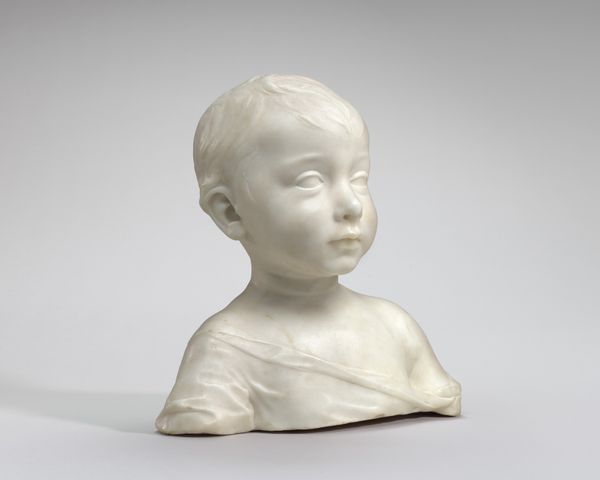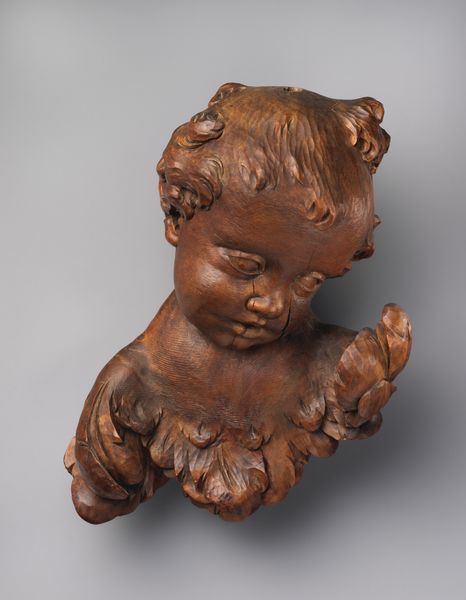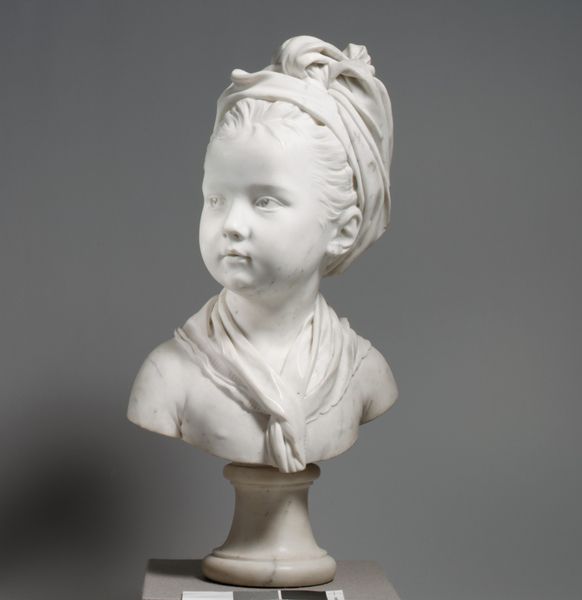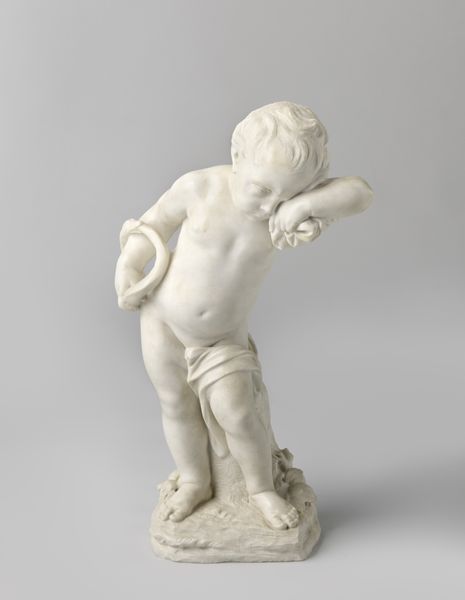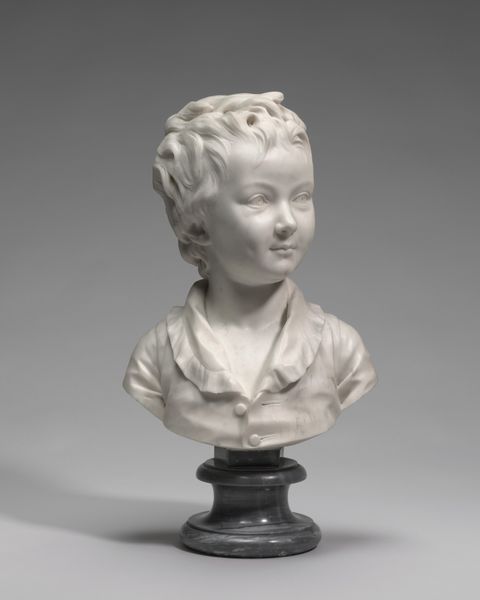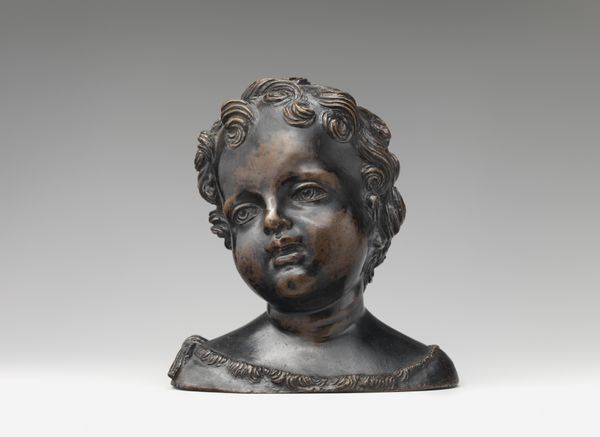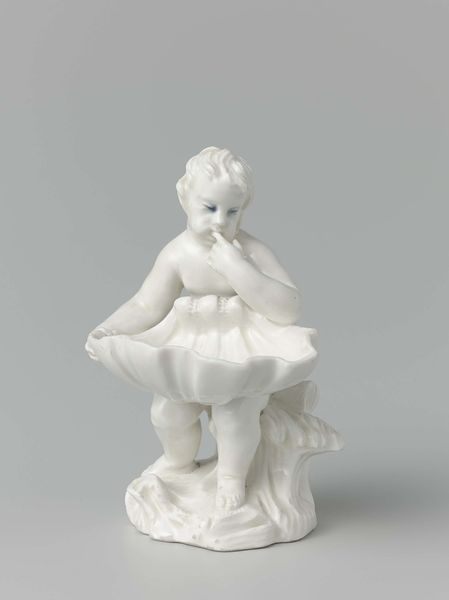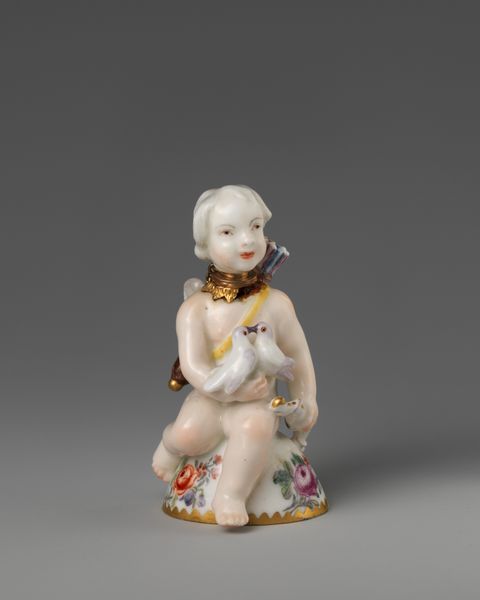
sculpture, plaster
#
portrait
#
figuration
#
child
#
sculpture
#
plaster
#
academic-art
Dimensions: H. 11 in. (27.9 cm)
Copyright: Public Domain
Editor: Here we have "Bust of a Young Child," a plaster sculpture made in 1876 by Ott and Brewer. The child's gaze is cast downward, almost melancholic. What does this sculpture communicate to you? Curator: This work reflects a particular sentimentality popular in 19th-century representations of children. Note the material, plaster, and consider its role in art consumption at the time. Plaster casts allowed wider access to sculpture, moving it from the elite sphere to a more middle-class market. Think of it as democratizing art through reproduction. Does knowing that change how you view its emotional content? Editor: It does shift my perspective. It feels less about profound individual emotion and more about fitting a cultural expectation, or even a marketing strategy. So, was this about selling a certain idea of childhood? Curator: Precisely! These sentimental images reinforced societal values and domestic ideals. Consider how many paintings and sculptures from this era idealize childhood innocence. These weren’t simply portraits, but carefully constructed projections of cultural aspiration. Do you see other indicators of social context? Editor: I noticed the classical pedestal. Does that choice suggest something about the status they’re trying to give the subject? Elevating a child in that way feels significant. Curator: Exactly! It links innocence with classical virtues, elevating the status of both childhood and, potentially, the family that could afford such an object. Reflect on who could afford this object and the statement this would make to their peers and contemporaries. Editor: So, on the surface, it's a sweet child, but really, it’s a reflection of social values, class, and marketing all rolled into one. Thanks, that was a good reminder to dig deeper! Curator: Indeed. Never trust a smiling child—at least, not without understanding the image's social role.
Comments
No comments
Be the first to comment and join the conversation on the ultimate creative platform.

